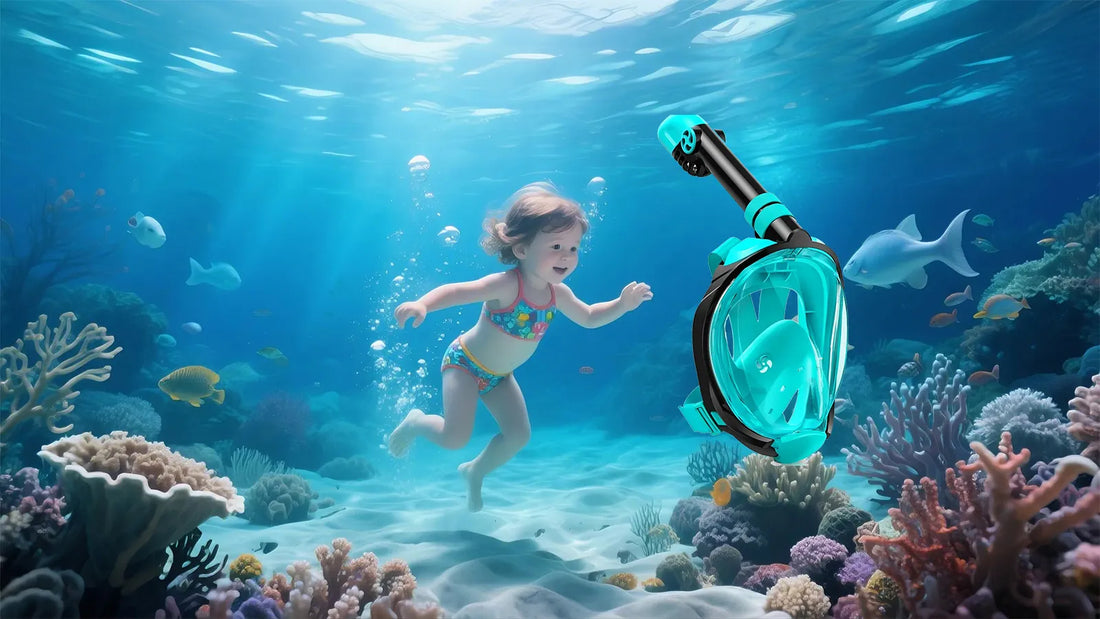The Great Barrier Reef is a bucket-list destination for snorkelers worldwide. Stretching over 2,300 kilometers along Australia's northeastern coast, this natural wonder is home to an incredible diversity of marine life and breathtaking coral formations. If you're wondering where to snorkel the Great Barrier Reef, you're in for a treat. This article will guide you through the top spots, ensuring you make the most of your underwater adventure.
Why Snorkel the Great Barrier Reef?
Snorkeling the Great Barrier Reef is an experience like no other. The reef is the largest living structure on Earth, visible even from space. It boasts over 1,500 species of fish, 400 types of coral, and countless other marine creatures. Whether you're a seasoned snorkeler or a beginner, the reef offers something for everyone. The warm, clear waters provide excellent visibility, making it easy to spot colorful fish, sea turtles, and even reef sharks.
Top Spots to Snorkel the Great Barrier Reef
Choosing where to snorkel the Great Barrier Reef can be overwhelming due to its vast size. Here are some of the best locations to consider:
1. Agincourt Reef
Located on the outer edge of the reef, Agincourt Reef is known for its pristine coral gardens and abundant marine life. The clear waters here offer excellent visibility, making it a favorite among snorkelers. You can expect to see everything from clownfish to giant clams.
2. Michaelmas Cay
Michaelmas Cay is a small, sandy island surrounded by vibrant coral reefs. It's a protected area, so the marine life here is thriving. Snorkelers can expect to see schools of colorful fish, sea turtles, and even the occasional manta ray.
3. Flynn Reef
Flynn Reef is another popular spot for snorkeling. It's known for its diverse coral formations and the chance to see larger marine species like reef sharks and barracudas. The reef is also home to several snorkeling trails, making it easy to explore.
4. Hardy Reef
Hardy Reef is famous for its iconic Heart Reef, a coral formation shaped like a heart. While the heart itself is best viewed from the air, the surrounding waters are perfect for snorkeling. You'll find a variety of coral and fish species here, as well as the chance to spot sea turtles.
5. Lady Elliot Island
Located at the southern end of the Great Barrier Reef, Lady Elliot Island is a haven for marine life. The island is surrounded by coral reefs, and snorkelers can expect to see everything from manta rays to reef sharks. The island is also a great spot for birdwatching.
Tips for Snorkeling the Great Barrier Reef
To make the most of your snorkeling adventure, keep these tips in mind:
1. Choose the Right Time of Year
The best time to snorkel the Great Barrier Reef is during the dry season, from June to October. The water is warm, and visibility is at its best during these months.
2. Use Reef-Safe Sunscreen
Protect both your skin and the reef by using reef-safe sunscreen. Chemicals in regular sunscreen can harm the delicate coral ecosystems.
3. Respect Marine Life
While snorkeling, it's important to respect the marine life. Avoid touching the coral or chasing after fish. Remember, you're a guest in their home.
4. Stay Hydrated
Snorkeling can be physically demanding, so make sure to stay hydrated. Bring plenty of water with you, especially if you're spending the whole day on the water.
5. Consider a Guided Tour
If you're new to snorkeling or unfamiliar with the area, consider joining a guided tour. Experienced guides can take you to the best spots and ensure your safety.
What to Bring for Your Snorkeling Adventure
Packing the right gear is essential for a successful snorkeling trip. Here's a checklist of items to bring:
- Snorkel mask and fins
- Reef-safe sunscreen
- Waterproof camera or GoPro
- Reef shoes or water socks
- Water bottle and snacks
- Dry bag for your belongings
Safety Considerations
While snorkeling is generally a safe activity, it's important to take precautions:
1. Check Weather Conditions
Before heading out, check the weather forecast. Avoid snorkeling in rough seas or during storms.
2. Know Your Limits
Don't push yourself beyond your comfort level. If you're feeling tired or unwell, take a break.
3. Stay Close to Your Group
If you're snorkeling with a group, stay close to them. It's easy to get disoriented in the water, especially in unfamiliar areas.
4. Be Aware of Marine Life
While most marine life is harmless, some species can be dangerous. Keep an eye out for jellyfish, sea urchins, and other potential hazards.
Environmental Responsibility
The Great Barrier Reef is a fragile ecosystem that needs to be protected. Here are some ways you can help:
1. Avoid Touching the Coral
Coral is delicate and can be easily damaged. Avoid touching it, and be mindful of your fins to prevent accidental contact.
2. Don't Litter
Always dispose of your trash properly. Even small items like plastic bags can harm marine life.
3. Support Conservation Efforts
Consider donating to organizations that work to protect the Great Barrier Reef. Your support can help ensure this natural wonder remains for future generations.
Making Memories
Snorkeling the Great Barrier Reef is an experience you'll never forget. From the vibrant coral gardens to the incredible marine life, every moment is a new adventure. By choosing the right spots, following safety guidelines, and respecting the environment, you can make the most of your trip.
Ready to dive in? The Great Barrier Reef awaits, offering an underwater world of wonder and beauty. Whether you're exploring the outer reefs or snorkeling near a sandy cay, you're sure to create memories that will last a lifetime. Don't wait—start planning your snorkeling adventure today!

